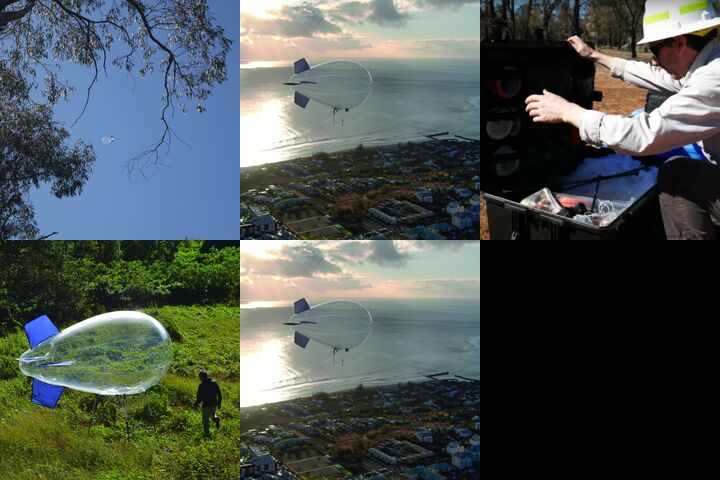Wildlife tracker balloons
The Problem
It is very hard to get any kind of telecommunication in a forest. Due to its thick vegetation or great distance to coverage is it likely to major loss of electromagnetic power. This means, in order to set a reliable network in a forest or other wild environments, scientist will need to set multiple transmitters and base stations (objects that send, receive and analyse the signal) are needed on the ground. This means more time to set the network and more maintenance needed on the field, as well as possibly more data lost. That is why studying forest animals, and especially small ones (harder to follow) can be quite challenging. An innovative answer must be brought to easier this work.
Our Proposal
At EONEF, we design an aerial and autonomous platform. It's a balloon inflated with helium, covered with solar panels and linked to a kite for better aeronautic performance. The balloon is able to embed telecommunication systems (base stations) at 150 m (450 feet) and power them with our batteries. Using LoraWAN technology, the sensors and base stations have minimum power requirement. Onto the animals, the sensors are small, lights (beetween 14 and 23g) can last for 2 years, while sending frequent data. Obviously, the more data and the more frequent, the lower the battery will last. But by setting it correctly, we can achieve good and long autonomy. The balloon is used to gain height, and enhance the coverage of the base station. At 150 m height, the direct line of sight between the base station and the sensor will go though a minimum of vegetation, which will minimize the number of base station deployed, and a maximum power reception, so a better data quality. We've been working on small and affordable balloons, that can be filled with small amount of helium. The idea is to have a light telecom kit easy and fast to deploy, with no infrastructure needed on the ground, and that can last several weeks with few maintenance.
We Assume that...
We assume that by increasing the quality and duration of wildlife monitoring campaigns we will be able to better preserve wildlife in their natural habitat.
Constraints to Overcome
Balloons have been use for a very long time, but with the wrong gas : Hydrogen (H2). H2 is an unstable gas, which explodes if under minimum stress. So, after the crash of the Zeppelin (the balloon not the group ;) ) in 1937, everyone turned away for this technology. Helium is a noble gas, and it not dangerous. However, it a small molecule, and may leak out rapidly. It requires a certain level of textile technology to have a membrane that can maintain the pressure to a good level. Secondly, the design of a shape to ensure stability in the air flow is quite challenging. Fluid mechanics is an old but hard science, and few laboratories are able to provide wind tunnels and experts to test it scale 1. Finally, there is the LoRAWAN technology which is quite new, even if a lot of organisations are looking to it and working with it. On the two first subjects, we are currently working with labs and recruited two engineers to tackle those challenges.
Current Work
We're working on 4 main subjects at the moment: - developing a high permeable membrane for helium - finding trials and testing prototypes in wild and remote areas and get feedback - improving stability of the balloon in air flow - integrate reliable LoRAWAN technologies from various manufacturers to test what's best (need 1 year to create a partnership and test product)
Current Needs
We need communication support and network to find more trials and spread the word. We also need a minimum of financial support to fund the expenses related to our first trials, especially in forest environment.
